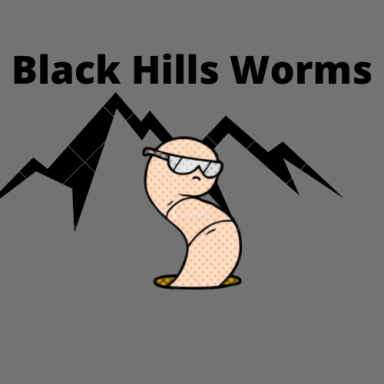Local To Rapid City South Dakota
We look forward to helping our community with:
Compost Worms and Castings
Meal Worms and Frass
We love worms!
Composting Worms = Natural Soil improvements
Looking for an easy and limited space-friendly way to reduce your food waste and enrich your garden soil? Look no further than composting worms such as red wigglers and European Nightcrawlers! These amazing little creatures can turn your kitchen scraps and yard waste into nutrient-rich compost in just a few weeks.
Don't have a few weeks? We have you covered with fresh castings available now!
Feeders and Bait
Whether you have animals that enjoy live food or you are an avid fisher that uses live bait, Mealworms and composting worms are a perfect choice!
What worms do I suggest for South Dakota?
And Similar states
In South Dakota, the climate can vary, and it's important to choose compost worms that can thrive in the local conditions. Two common types of composting worms suitable for South Dakota and similar climates are:
Red Wiggler (Eisenia fetida):
- Red wigglers are well-suited for composting in a variety of climates, including South Dakota.
- They are adaptable and can tolerate a range of temperatures, making them suitable for both indoor and outdoor composting systems.
- Red wigglers are efficient decomposers, processing organic waste quickly and producing nutrient-rich castings.
European Nightcrawler (Eisenia hortensis or Dendrobaena veneta):
- European nightcrawlers are another excellent choice for composting in South Dakota.
- They are slightly larger than red wigglers and can tolerate cooler temperatures, which can be beneficial in colder climates.
- European nightcrawlers are known for their ability to burrow deep into the bedding, improving aeration in the compost bin.
When starting a worm composting system in South Dakota, consider the following tips:
Temperature Considerations: While both red wigglers and European nightcrawlers can tolerate a range of temperatures, it's important to monitor and regulate the temperature of your compost bin. Provide insulation during colder months, especially if you plan to keep your compost bin outdoors.
Bedding Material: Use a bedding material such as shredded newspaper or cardboard to create a comfortable environment for the worms. This bedding also helps retain moisture and provides carbon for the composting process.
Moisture Control: Keep the compost bin consistently moist but not waterlogged. Worms require a damp environment for respiration, and proper moisture levels support the decomposition process.
Balanced Diet: Provide a balanced diet for your worms, including fruit and vegetable scraps, coffee grounds, and small amounts of non-greasy kitchen scraps. Avoid adding dairy, meat, or oily foods, as they can attract pests and create odor issues.
Before introducing compost worms, make sure to prepare the bedding, add a small amount of food waste, and allow the system to stabilize for a few days. Gradually adjust the amount and frequency of food based on how much is left from the previous feeding. Regularly harvest the worm castings to use as nutrient-rich fertilizer for your plants.
Have Fun and enjoy your new friends: I know you are probably wondering what I mean about having fun with worms, but from my experience they pull you in. I sometimes have to stop myself from constantly going through the bin looking for worms or cocoons. I also enjoy seeing what foods they eat more quickly than others or what worms are piling over.
Happy Composting!
We need your consent to load the translations
We use a third-party service to translate the website content that may collect data about your activity. Please review the details and accept the service to view the translations.



